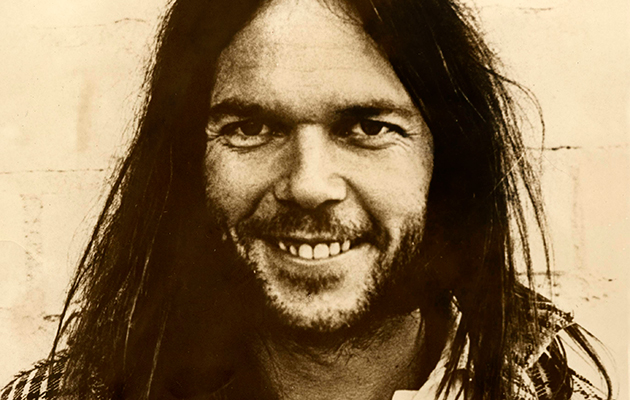Helpless
Album: Déjà Vu
Released: March 1970
Recorded: Wally Heider’s, San Francisco, Oct 1969-Jan 1970
When Stephen Stills took David Crosby and Graham Nash to Young’s house in Topanga Canyon in the early summer of 1969 to persuade them that his old Buffalo Springfield colleague should join the group, “Helpless” was allegedly the song that convinced them. “By the time he finished, we were asking him if we could join his band,” David Crosby recalled.
This doesn’t fit with Young’s own claim in the sleevenotes to the Decade anthology, in which he insists the song was written in New York in 1970. But the simple chronology of the recording of the Déjà Vu album suggests Crosby’s account is more likely.
During the sessions for the album, Young stayed in the sleazy Caravan Lodge Motel in San Francisco’s run-down Tenderloin district, possibly because it was the only place that would tolerate the presence in his room of his two pet bush babies Harriet and Speedy.
Young also attempted to record “Helpless” with Crazy Horse at Sunset Sound around the same time, but when he and the band had completed what he believed to be the perfect take, he turned around to the control room to find the tape machine hadn’t been running.
“We were doing it live, everybody playing and singing at once and we did an eight- or nine-minute version of it with a long instrumental in the middle. And the engineer didn’t press the button down,” he says. “I took that as an omen. That’s why I did it with CSN.”
But it took CSN some time to get the song right, with Young consistently complaining that they were taking it too fast. “I had to play it with them until four in the morning, doing it over and over again to get everybody tired enough so that they would stop doing this extra stuff where everyone was playing too much,” he said in a 1989 radio documentary. “We kept on going for a long time. Finally we got one where they were half-asleep and they didn’t know they were doing it.”
The song gave Young more trouble when he performed an inept version in November 1976 at The Band’s farewell concert, The Last Waltz. His appearance was not helped by the cocaine binge he had been on for the previous 48 hours and a large rock of the white stuff, which was horribly visible in his nostril, had to be rotoscoped away from the scene in the film at a cost of several thousand dollars.
________________________
After The Gold Rush
Album: After The Gold Rush
Released: Sept 1970
Recorded: Topanga, early 1970
“After The Gold Rush” shared its title with a screenplay by Dean Stockwell for a disaster movie in which Young had entertained hopes of making his acting debut. In the event, the movie failed to secure financial backing, and was never made.
Stockwell was a neighbour of Young’s in Topanga, and the plot of his proposed film involved the flooding of the canyon by a tidal wave following an earthquake. The screenplay then followed the effect of the disaster on a number of residents, including a local folk singer – a part that was tailor-made for Young.
Performed solo at the piano, accompanied only by a mournful French horn, the title song opened with an apocalyptic vision of ecological catastrophe. But then it took off into the realms of science fiction, with extra-terrestrials arriving in silver ships to save life on earth by transporting it to start a new colony in space. According to producer David Briggs, the song was written within half an hour.
Many years later, Young claimed the track to be an exercise in time travel, with scenes set in past, present and future: “There’s a Robin Hood scene, there’s a fire scene in the present and there’s the future. The air is yellow and red, ships are leaving, certain people can go and certain people can’t. I think it’s going to happen.”
To biographer Jimmy McDonough, he elaborated: “Civilisations. Dropping seeds. Races. Blending. Species getting stronger. Like plants do. I see it all as the same thing. Who knows how big the fucking universe is?”
________________________
Only Love Can Break Your Heart
Album: After The Gold Rush
Released: Sept 1970
Recorded: Topanga, early 1970
“Only Love Can Break Your Heart” might sound heart-breakingly self-confessional and have helped to cement the early-’70s image of Young as a forlorn, lovesick troubadour, but the song was actually written for Graham Nash, whose relationship with Joni Mitchell had just hit the rocks.
As such, it contributes to the soap opera that was the CSN&Y axis at the time, for Young became the third songwriter to document the relationship, Nash having written the sentimental “Our House” for Déjà Vu and Mitchell including “Willy” (her nickname for Nash) on Ladies Of The Canyon.
Coincidentally, the same Mitchell album included “The Circle Game”, written for Young in response to his “Sugar Mountain”. In turn, Young would write another, unreleased song about Mitchell called “Sweet Joni”, which he played several times in concert during 1972-73. It was also rumoured – probably unfairly – that “Stupid Girl” on Young’s 1975 album Zuma was also about her.
Not to be left out of the tangled web, Stephen Stills recorded “Only Love Can Break Your Heart” on his 1984 album Right By You – and Crosby and Mitchell had been lovers before Nash even arrived on the scene.
Released as a single, “Only Love Can Break Your Heart” gave Young his first solo Top 40 hit in America in December 1970.



